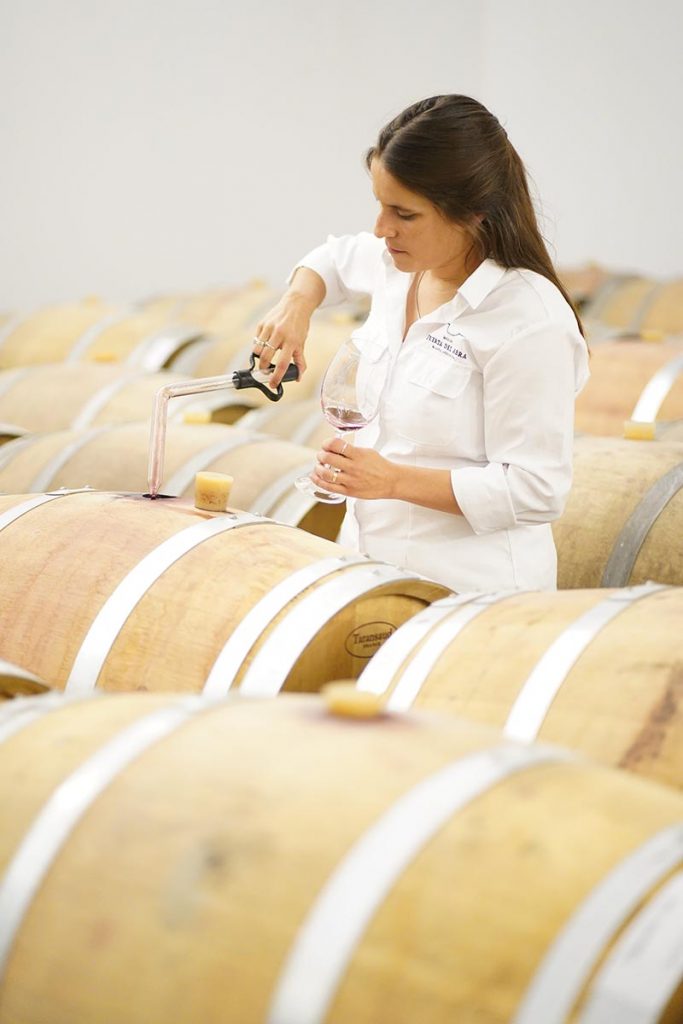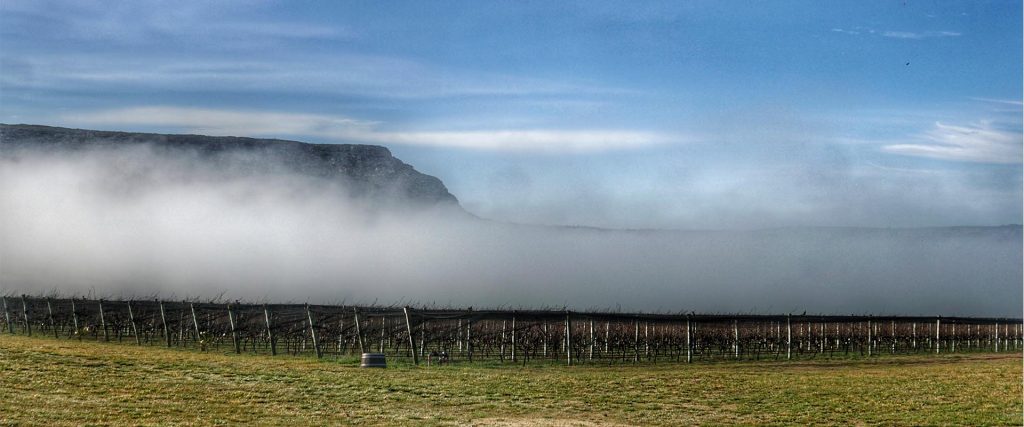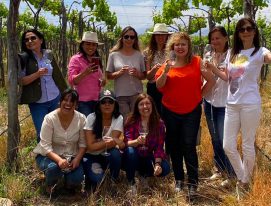The calcareous soils, a distinctive climate dominated by winds off the Atlantic, winemaking expertise, history and innovative methods and years of in-depth research have culminated in the establishment of the Balcarce GI by the National Viticultural Institute.
Championed by the team at Bodega Puerta del Abra (located in El Vallecito, in the midst of the Sierras of Tandilia, a geological formation formed 2.2 billion years ago, in the Province of Buenos Aires, the boundaries of the Balcarce GI match those of the local municipality.
The winery is 35 miles from Mar del Plata, the most famous seaside city in Argentina, and is owned by the businessman Jorge Pérez Companc. There, they produce their high-end “Insolito” range, which they sell themselves across the country from their website, as well as to the wine stores and restaurants of Buenos Aires such as Don Julio, Crizia, Chila and Sarasanegro (in Mar del Plata) and wine bars such as VinoBien and Vico.
The project started in 2013 and currently has 12 hectares under vine with several varieties including Pinot Noir, Cabernet Franc, Bonarda and Tannat – among the reds – and the whites Chardonnay, Albariño and Riesling.
The oenologist Delfina Pontaroli – whom we spoke to – and her team led the studies of the terroir and prepared all the documentation necessary for the approval of the GI (they also worked with Lydia and Claude Bourguignon, renowned experts in the identification of terroirs).

The Balcarce GI, a boost for Buenos Aires wine
How will this new GI help to put the Province of Buenos Aires on the viticultural map?
I think the Balcarce GI is a very important achievement. The fact that new GIs are appearing in Buenos Aires is beginning to demonstrate the potential of the province, not just because it shows that quality wines are being made here but also the range of different styles to be found. Conditions across the province can be completely different.
Even within the Balcarce GI, I know that in time we’re going to come across differences that are going to need new GIs. That means a lot of work with terroirs and microclimates and that’s very good for the development of the viticultural region.
A hill, stream, or proximity to the sea can completely change the local conditions and lend the region incredible potential. We’re also beginning to see large wineries move into the area.

What were the processes that went into the establishment of the GI?
We started out in early 2019. The National Viticultural Institute asked us to compile a large amount of information arising from a detailed study of the area if the new GI was going to be approved. We needed to demonstrate that the area is different from others and has its own distinct potential. We carried out studies of the climate and the soil, examined the area’s history, the town, and the local geology before deciding on the boundaries of the GI. We sent a lot of reports and only in 2022 did we complete the folder. And so the Balcarce GI was born. It makes us very proud that we’re pioneers in the area; it represents a major challenge for the future.
Are there other wineries in the area that can join the GI?
Today we’re the only winery in Balcarce that is registered with the National Viticultural Institute but I know that several projects are underway. There are already a few vineyards – some planted, some just in the planning stages – which aren’t yet producing wine. It’ll be a few years but they’ll surely appear.

What are the distinctive characteristics of wines made in the Balcarce GI?
There’s the tart acidity, the natural acidity of the grape, the lower alcohol levels, with an alcohol content of between 12° and 12.5°. Then there’s the more austere character, these wines aren’t so much looking to achieve ripe or tropical fruit flavors but a more delicate palette such as floral and citrus notes and mineral qualities like graphite. We also get balsamic, aromatic herb aromas. They have a very elegant, different kind of profile structured around balance rather than concentration.



